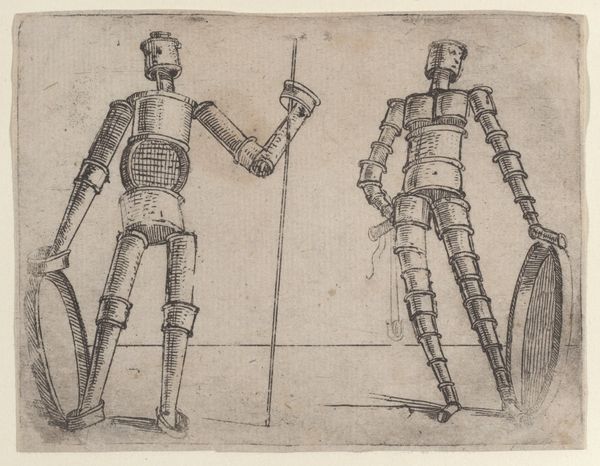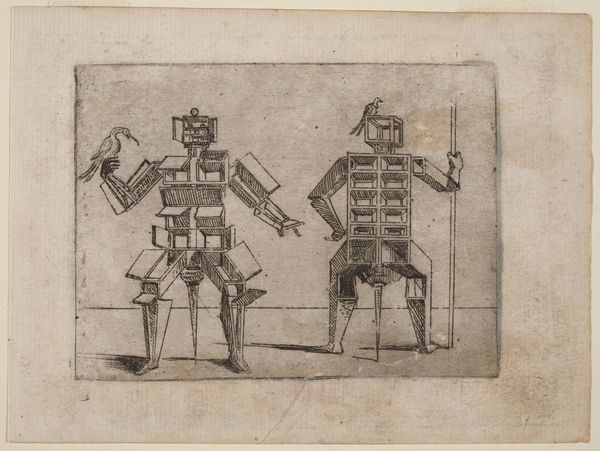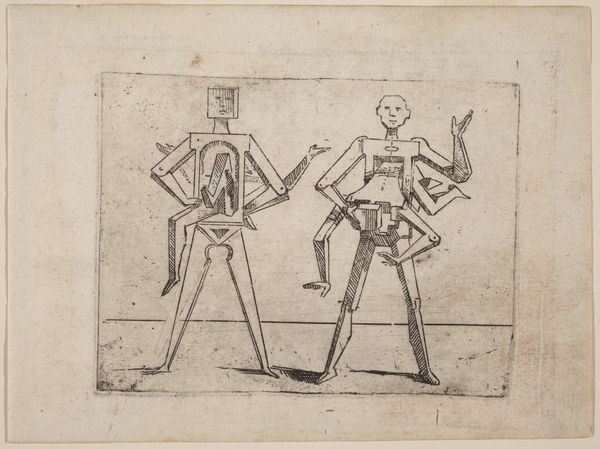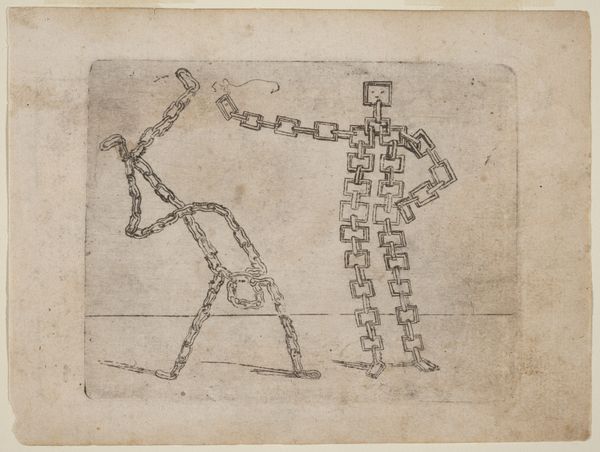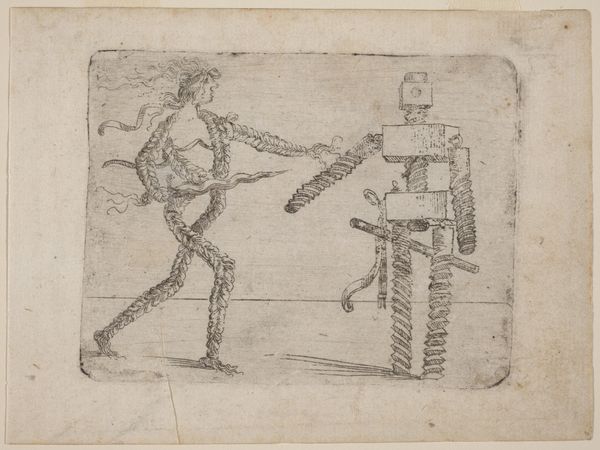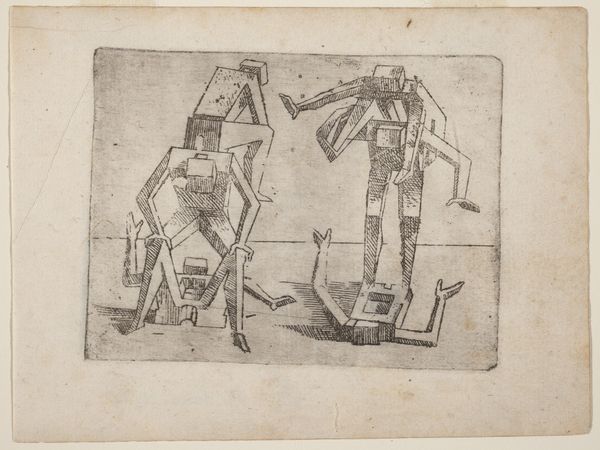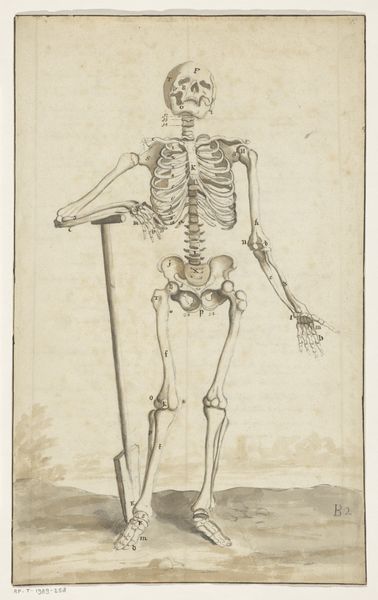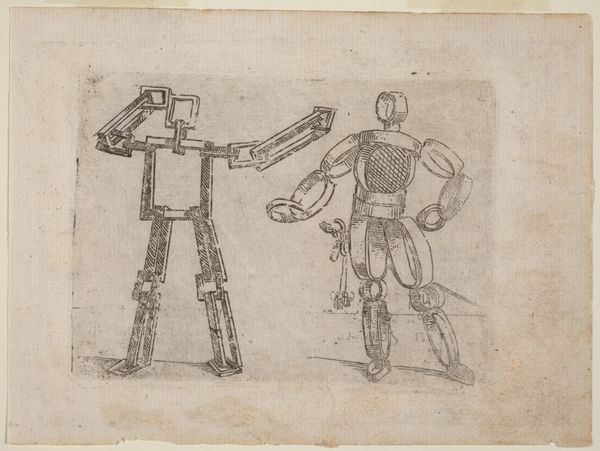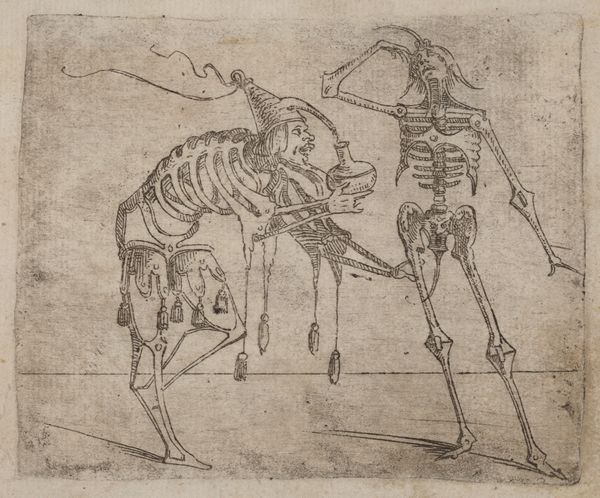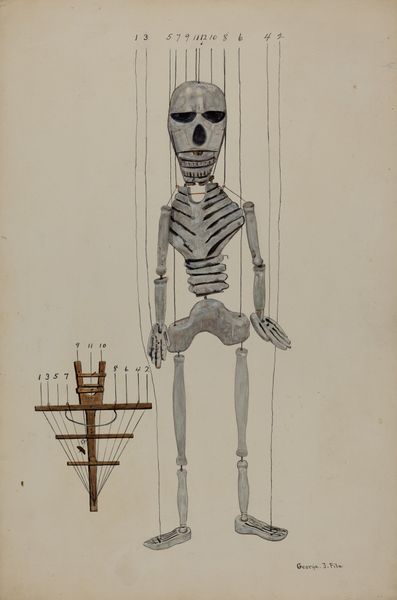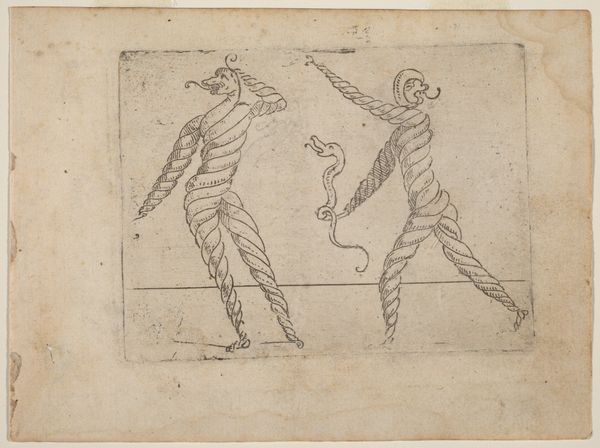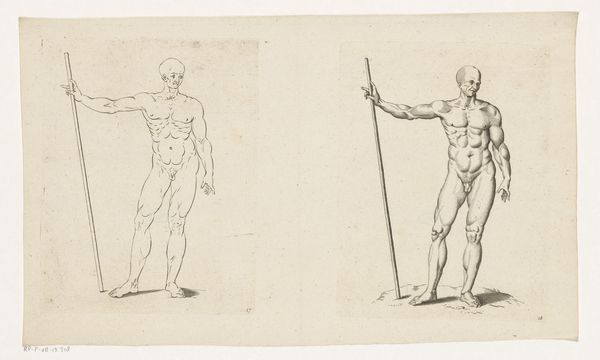
print, engraving
# print
#
mannerism
#
figuration
#
geometric
#
engraving
Copyright: National Gallery of Art: CC0 1.0
Curator: We’re looking at an engraving from 1624 entitled "From 'Bizzarie di varie Figure'", by Giovanni Battista Bracelli. Editor: Striking. I'm immediately struck by the geometrical figures composing these bodies. They're bizarre, yes, but also a bit menacing. The lines are sharp and the figures seem to stride purposefully. Curator: Bracelli was a fascinating figure operating in the Mannerist style, and this print exemplifies the playful, sometimes unsettling exploration of form and construction that was part of that movement. It is important to understand how printed materials moved throughout Europe and fostered particular tastes. Editor: These figures remind me of automatons, early robots perhaps, conjuring up age-old anxieties about humanity creating life, about artifice overtaking nature. There’s such a strong feeling of the artificial here. Look at how each body part is rigidly defined and separate. Do you read a story between the two figures? Curator: It begs the question of craft versus industry. Here is an artist utilizing techniques in reproducible formats, allowing for mass availability, echoing production means, while attempting to showcase the skill of the master engraver. In his time the debate must have been similar: what does it mean to make art that can be copied and distributed widely, impacting workshops and labor at the time? Editor: It's fascinating how the artist plays with geometric symbols here, the boxes, rectangles, all combined together to build humanoid shapes. These shapes may have represented stability and structure. The open forms leave an interpretative door ajar. I think Bracelli may be prompting us to find our own meaning in the balance between constructed forms and fluid forms in representing humanity. It also echoes ancient ideas about the body being a microcosm. Curator: That idea of microcosms versus larger-scale changes also ties into our ideas about consumption. Consider where these materials were sourced, and to whom they would have been distributed. Engravings played a crucial role in disseminating imagery, but also speak to commerce, workshops, and production methods of the time, as do all forms of material culture. Editor: I leave with that intriguing tension between art as a testament to symbolic depth, and its tangible nature. Both have been such a potent pairing here today. Curator: Indeed, it’s easy to see why Bracelli’s exploration of the making is something to contemplate.
Comments
No comments
Be the first to comment and join the conversation on the ultimate creative platform.
